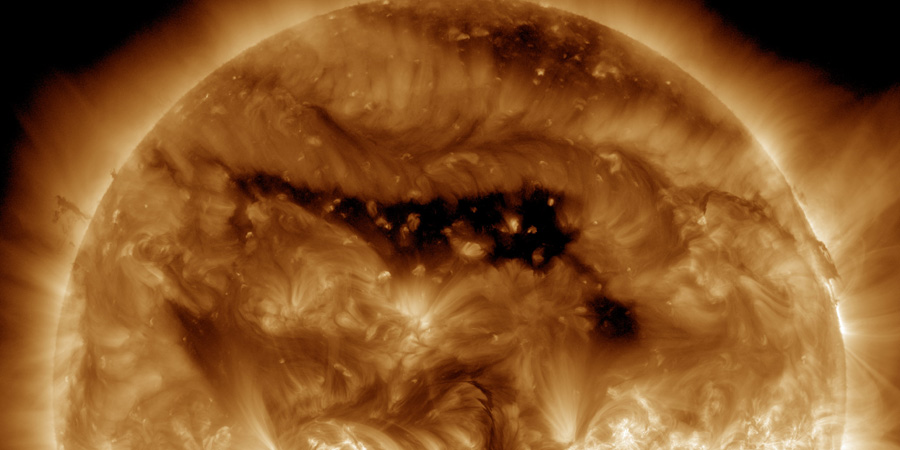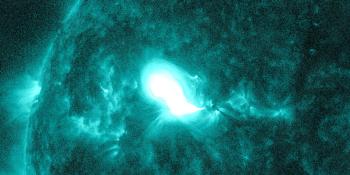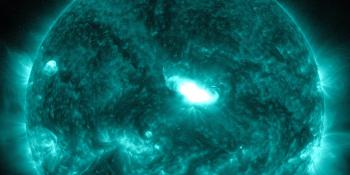Coronal hole faces Earth
poniedziałek, 11 listopada 2024 15:54 UTC

Northern hemisphere sky watchers are having a cracking start to their aurora season. The past few months, we have had major solar flares, coronal mass ejection impacts and in general fairly high geomagnetic activity. Welcome solar maximum! So many people have already spotted aurora from their locations even those who do not live close to the arctic circle. Really amazing to see... and today we have more good news for you as we have a coronal hole facing our planet today which is sending a high speed solar wind stream towards our planet.
A northern hemisphere coronal hole is facing Earth. Enhanced solar wind could arrive in ~3 days - Follow live on https://t.co/bsXLido7vP pic.twitter.com/OCT2u276w7
— SpaceWeatherLive (@_SpaceWeather_) November 10, 2024
This is the first major coronal hole in quite a while. This northern hemisphere coronal hole isn't in a prime earth-directed position for it to optimally influence our planet but we should feel some effects from it within the next 24 to 48 hours. Expect enhanced geomagnetic conditions at high latitude locations when the stream arrives.
There were also some M-class solar flares the past couple of days but they were either not eruptive or produced a noteworthy coronal mass ejection with an earth-directed component.
Thank you for reading this article! Did you have any trouble with the technical terms used in this article? Our help section is the place to be where you can find in-depth articles, a FAQ and a list with common abbreviations. Still puzzled? Just post on our forum where we will help you the best we can!
Najnowsze wiadomości
Najnowsze wiadomości z forum
Wesprzyj SpaceWeatherLive.com!
Wielu ludzi odwiedza SpaceWeatherLive aby śledzić aktywność słoneczną lub sprawdzić czy jest szansa na zaobserwowanie zorzy polarnej. Niestety, większy ruch na stronie oznacza większe koszty utrzymania serwera. Dlatego, jeśli jesteś zadowolony ze strony SpaceWeatherLive, zachęcamy do wspierania nas finansowo. Dzięki temu będziemy mogli utrzymać naszą stronę.

Fakty na temat pogody kosmicznej
| Ostatnie rozbłyski klasy X | 2024/11/06 | X2.39 |
| Ostatnie rozbłyski klasy M | 2024/11/13 | M1.7 |
| Ostatnia burza geomagnetyczna | 2024/11/10 | Kp5+ (G1) |
| Dni bez plam słonecznych | |
|---|---|
| Ostatni dzień bez skazy | 2022/06/08 |
| Średnia miesięczna liczba plam słonecznych | |
|---|---|
| października 2024 | 166.4 +25 |
| listopada 2024 | 166 -0.4 |
| Ostatnie 30 dni | 163.2 +18.4 |


